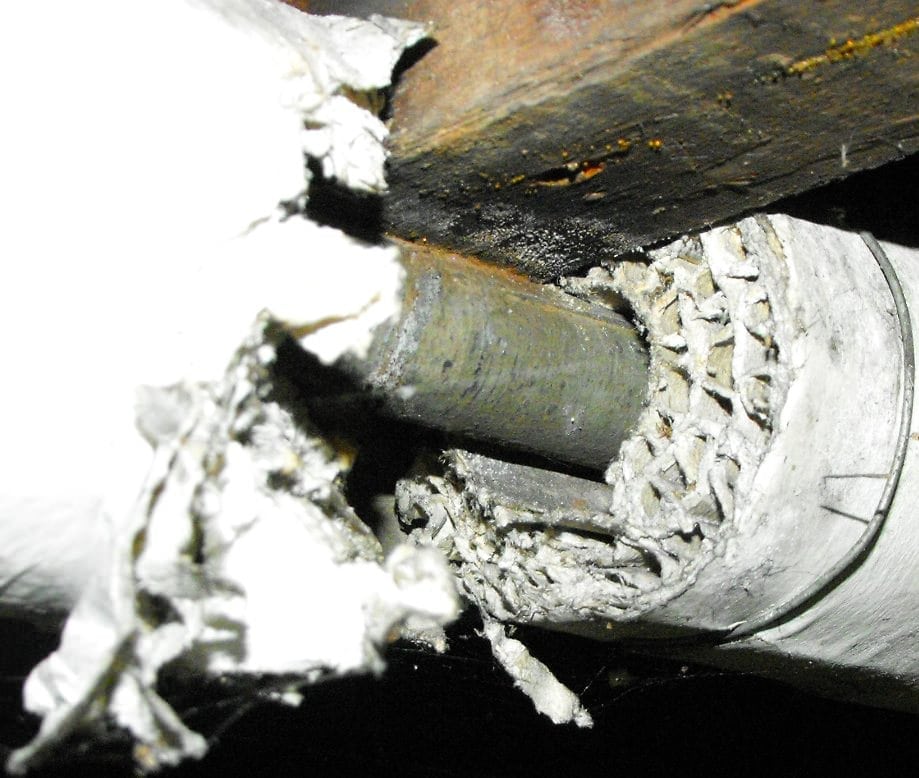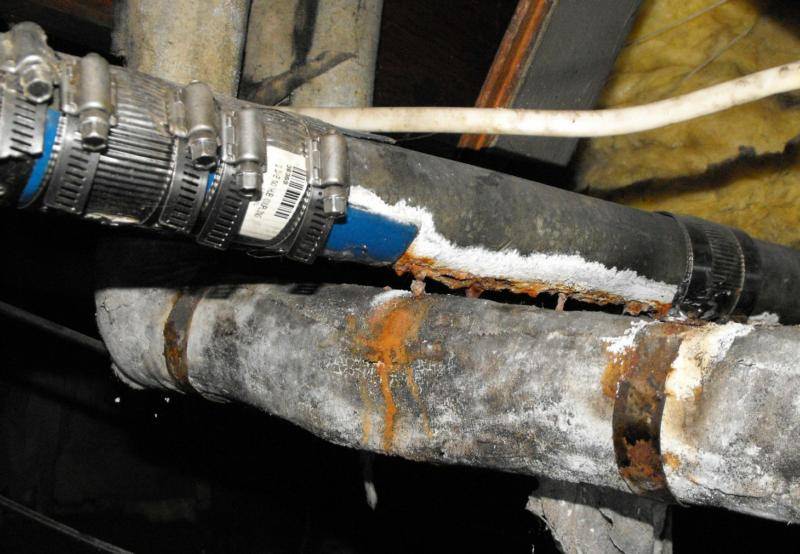Galvanized drain pipes installed prior to the mid 50’s are likely to be at the end of their life. For all intents and purposes this is the fast majority of galvanized piping. Inspectors will use these general guidelines when he or she finds them in your dream

house, to let you know that you should be prepared for replacement of the pipes—-even if they seem to be draining OK at the time of inspection.
Galvanized drain pipes usually do not spontaneously start leaking. In fact, failure happens pretty much continuously over the life of the pipe, gradually as the pipes deteriorate on the inside. Eventually small pin-holes start to develop. These tiny leaks will seal themselves with rust until they corrode through again and then start to leak again. Eventually the leaks can’t seal themselves any longer and the pipe leaks all the time.
It is common to see these holes patched with duct tape, electrical tape, tar and banding clamps. I have sometimes seen repairs that would cost more than replacement of the pipe—-well except that the plumber would have to be paid for his time. So the homeowner looks at the leak, and will spend 40 bucks or 10 bucks and figure out a way to beat a little more life out of the pipes.
The pipes pictured below drained just fine at the time of inspection—–and were not even leaking—-and they are certainly WAY past the end of their expected life. The inspector would be remiss to not recommend replacement NOW.


For arguments sake, let’s just say you are a “Pipe-Beater,” and you really need to get a little more life out of the drain before you call in the plumber—-and then have to fork over the big bucks. The stainless steel no-hub couplings that one can see in the lower picture cost about $4.00 each, of which there are four—-for a total of $16.00. To replace that same section of damaged pipe with new plastic pipe would have required about $1.00 worth of pipe and two connectors for a total of $9.00—-assuming you didn’t have to buy a hack-saw.
Those of you that read my blog religiously will recognize the Asbestos wrapped pipes below the leak—-the subject of the post previous to this one.
Will the plumber be willing to work around the stuff? Good question.
***
Charles Buell, Real Estate Inspector in Seattle
If you enjoyed this post, and would like to get notices of new posts to my blog, please subscribe via email in the little box to the right. I promise NO spamming of your email